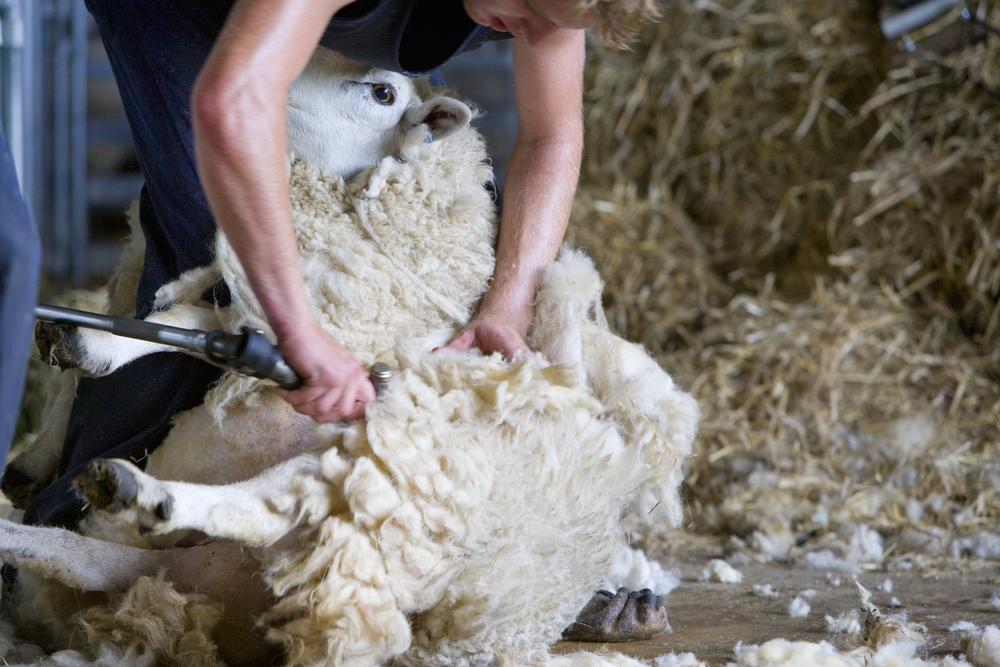
Sheep shearing has been common practice for centuries and is a necessary part of the farming calendar year. It commences from the end of May throughout the summer months, usually completing by the end of August. This is of course dependant on location across the UK and the weather!
Shearing can be time consuming if not done professionally, some farms often seek help from additional third party shearing contractors for this exact reason.
The National Association of Agricultural Contractors (NAAC) estimates that ten years ago there may have been around five hundred overseas shearers coming to the UK. In 2019, the NAAC assisted just over fifty shearers entering the UK to work for shearing contractors, which suggests a decrease of overseas shearers. It should be noted that due to travel restrictions in place because of the Covid-19 pandemic very few overseas shearers came to the UK for the 2020 season and the job was completed almost entirely by UK based shearers without complication, confirming our strong position in the number of shearers living and working here! (NSA, 2021)
It’s important that you shear your sheep at least once a year using the correct tools, avoiding stressed livestock and potential injury! We’ve pulled together a few tips to ensure you and your livestock stay safe this shearing season.
1. Have you got the right tools?
Shearing is usually conducted with a hand held machine called a clipper which has two sharp blades, a comb and a cutter which move simultaneously to cut the wool. We stock a variety of clipping equipment for your sheep. From scissors to clippers, combs and cutters explore the range today.
Electric clippers make light work in comparison to hand shears or scissors. If you’re looking for advice on which tools to choose, speak to a member of the sales team who would be more than happy to advise on which tools suit your technique and budget.
2. Why would I choose scissors over clippers for sheep shearing?
'Dagging' is a phrase which covers the cutting away of dirty, wet wool. This is easily done with dagging shears or scissors pre using electric clippers. For some farmers they may choose to shear wholly using hand shears. It is a matter of personal preference. Hand shears may seem like shearing equipment from the past but there can be advantages to using them! For example, clippers cut closely to the skin, after using them sheep may feel the effects of the cold and use more energy to stay warm rather than producing milk. Hand shears allow the farmer to leave a short layer of insulation, which will reduce temperature shock. Other benefits are noise reduction, therefore less stress on the sheep, cheaper and better for the environment!
3. Have you got the right handling equipment?
This is a great time of year to utilise your handling systems. These should be optimised for efficiency and to minimise stress, contributing to best practice during shearing. Whether it is a mobile yard, hurdles or even the construction of a shed or outbuilding having an infrastructure in place can be hugely beneficial for saving time, stress and injury.
4. Are you prepared for the physical demands of shearing?
Shearing sheep is hugely demanding on the body. It is recommended that moderate exercise such as weights or aerobic work will help reduce the risk of injury and make the job less tasking on your body!
“It is estimated that a shearer will burn more than 5000 calories per day, therefore a protein and carbohydrate-rich diet such as fish, red meat and eggs as well as potatoes, pasta and rice, will not only provide plenty energy but will also stabilise blood sugar levels and maintain stamina while shearing.” (The Scottish Farmer, 2017)
5. Have you got the right clothing?
Shearing specific clothing will not only ensure you remain comfortable but it will also assist with reach and grip. Shearing singlets are made to be longer than standard vests to accommodate for continual bending. Take a look at the new StowAg / Lister shearing vests, new in this season! Don’t forget, once complete it is important to remain warm, make sure you have a hoodie or a fleece to hand to ensure your body temperature doesn’t drop! Take a look at the StowAg Hoodie and StowAg Fleece, perfect for post-shearing!
References:
- National Sheep Association 2021, https://www.nationalsheep.org.uk/workspace/ng-pdfs/final-practical-considerations-for-shearing-in-the-uk.pdf
- The Scottish Farmer 2017, https://www.thescottishfarmer.co.uk/livestock/sheep/15350011.the-secrets-behind-shearing-success/
